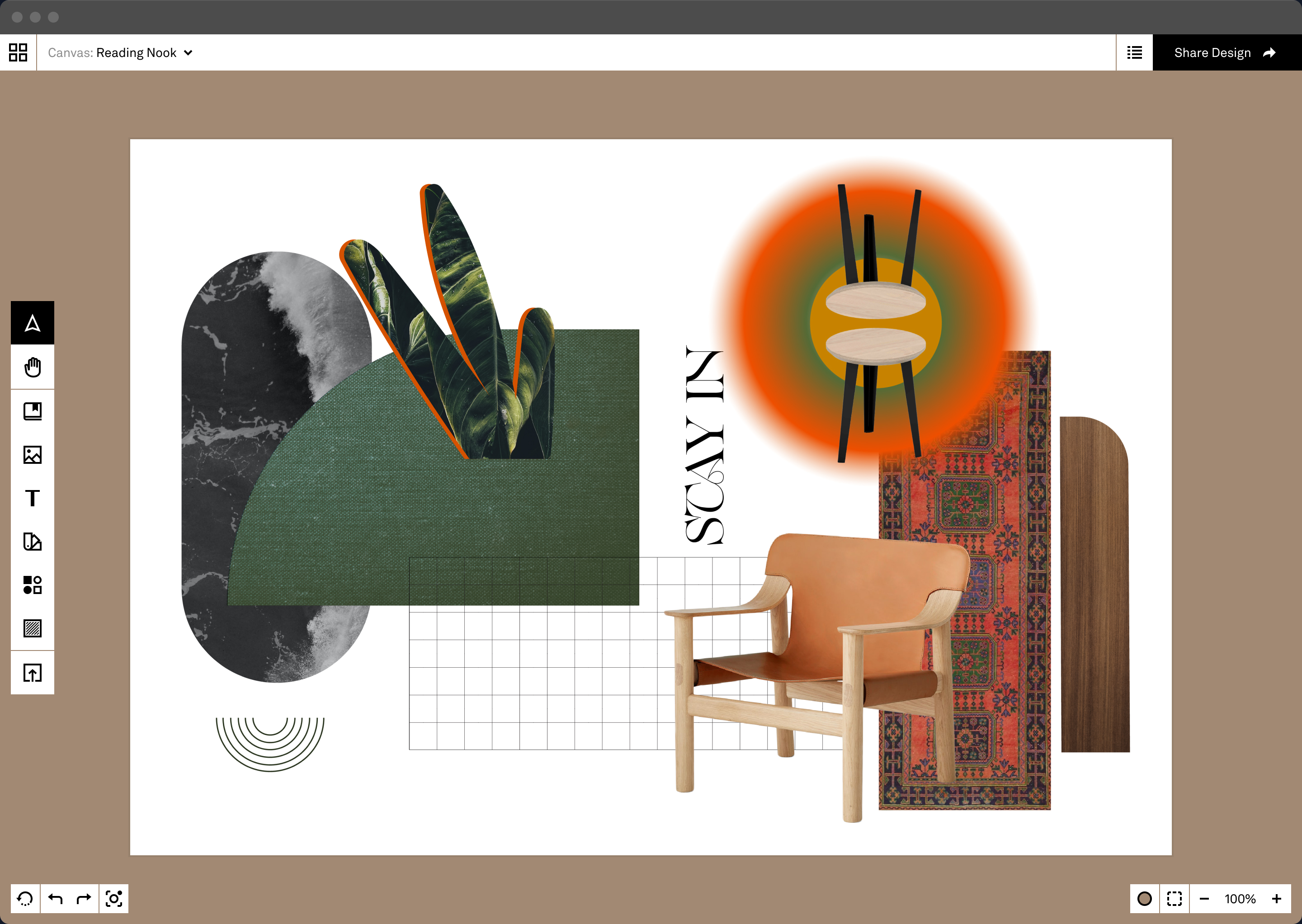Monetizable mood boards might sound like the moonshot idea that no one asked for, but when you think about it, the vision is already informally happening in various corners of the internet. A young generation of users shops with community in mind, whether that’s buying merchandise from your favorite influencers or giving into those Instagram advertisements after spending way too much time on the grid.
As more users think of shopping as a social, digital-first activity, The Landing, a seed-stage startup coming out of stealth, is hoping to win over those who have an affinity for designing homes and spaces. On The Landing, users can create, and shop from, room designs to help furnish their homes.

Image Credits: The Landing
“There’s no contextually rich, visual shopping destination, where you could curate and discover and share and shop all in one place,” co-founder Miri Buckland said. The Landing hopes to be that destination.
Started by Buckland and Ellie Buckingham, The Landing is launching with $2.5 million in financing, in a round led by Aileen Lee at Cowboy Ventures. Lee will be taking a board seat. Other investors include Dara Treseder, the CMO of Peloton, Manish Chandra and Tracy Sun, the founders of Poshmark, Unshackled, Designer Fund, and Progression Fund.
The Landing began as a pandemic pivot. Buckland and Buckingham were always interested in solving the pain point of contextual furnishing for users, but began by physically moving people into apartments and helping them set up different furniture. Then, the pandemic hit and limited the ability to do high-touch services. Buckingham says that this was “potentially the best forcing function” to focus on what kind of business The Landing wanted to be.
“I don’t need to be the person moving into your apartment with a couch,” she said. “It was about the importance of empowering creativity and empowering individuals to create digital and physical spaces.” That’s when they dropped the moving service business, and instead used furnishing as a vector to solve the problem of contextual and social e-commerce.
It’s a smart idea that has not gone unnoticed. Houzz, a Sequoia-backed home improvement startup, connects users to products from third-party retailers as well as services from architects, designers, or contractors. There’s also Modsy, which has raised north of $70 million to date, which helps users virtually redesign their homes.
Buckingham worked for Modsy when she was at business school, where she first started noticing that she disagreed with the startups’ main thesis.
“Their motto was basically a digital rendition of an existing human service,” she said. “And I came away from the experience not super convinced that the service model was the scalable, future answer to consumerization of access to design.” She noticed that the younger generation was looking for a self-serve, customizable answer, instead.

Miri Buckland and Ellie Buckingham, the co-founders of The Landing.
The Landing is launching with creative tooling capabilities, which allow users to build and design spaces within its platform. In the coming months, the team is focused on adding a social layer atop the design tool, with features like profiles, discovery, fede, and commenting.
The Landing’s Slack channel is currently being used to discuss these features and what is most in-demand from early users.
The founders aren’t worried about a lack of demand, or only being a platform for the few times that people furnish their homes throughout their lifespan. As Buckland pointed out, people browse Zillow all the time, and have Reddit channels about dream homes, creating designs, and more. The startup is aiming to serve that population as well — the dreamers and not just the realists.


